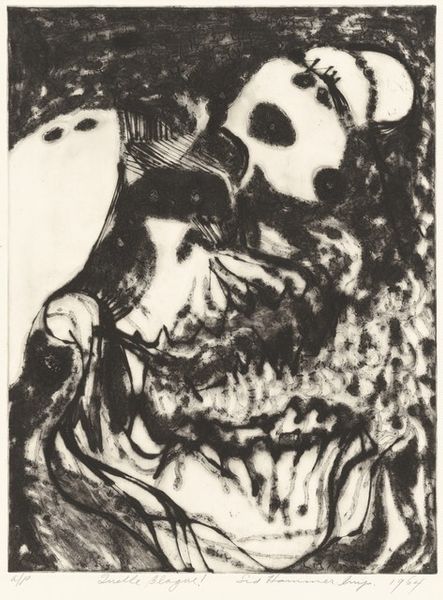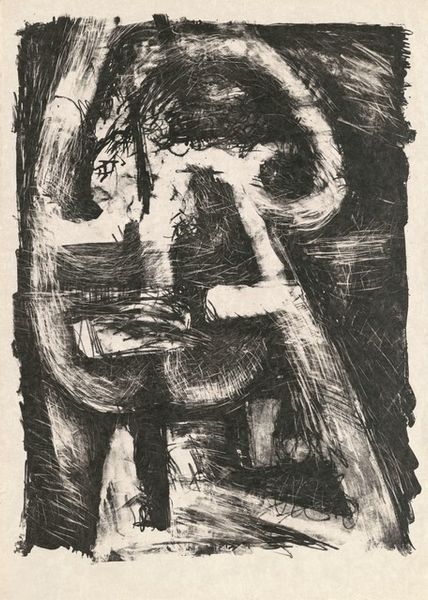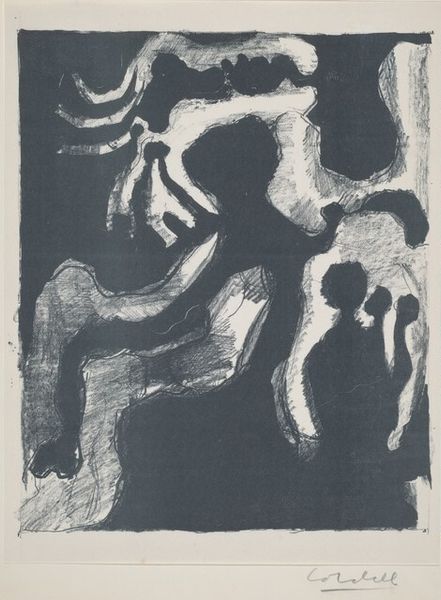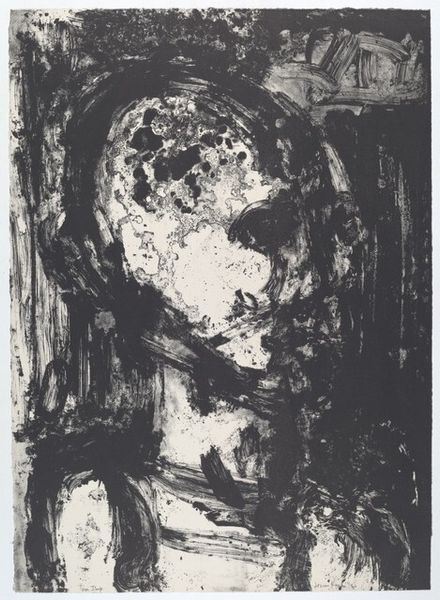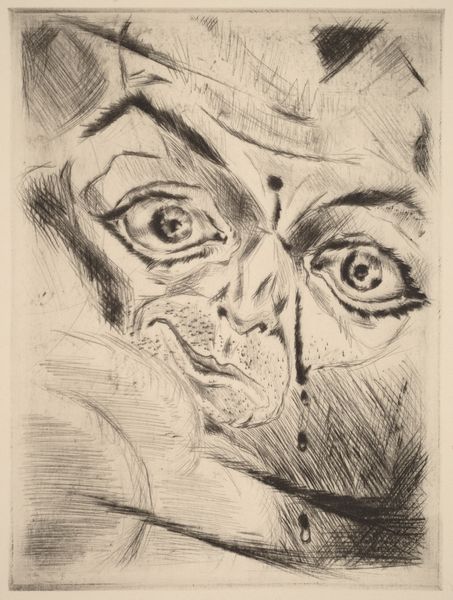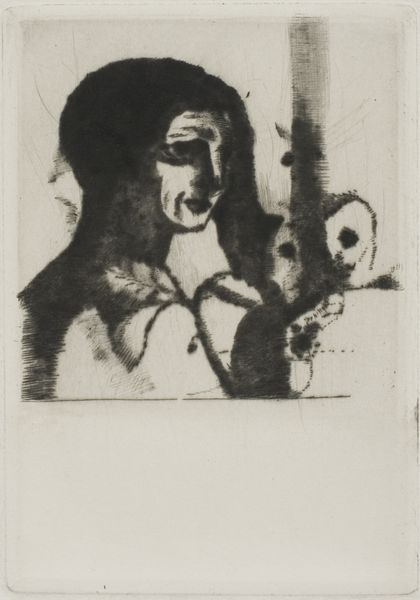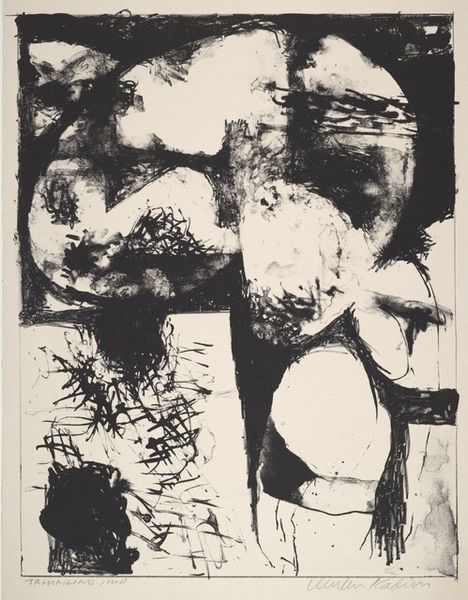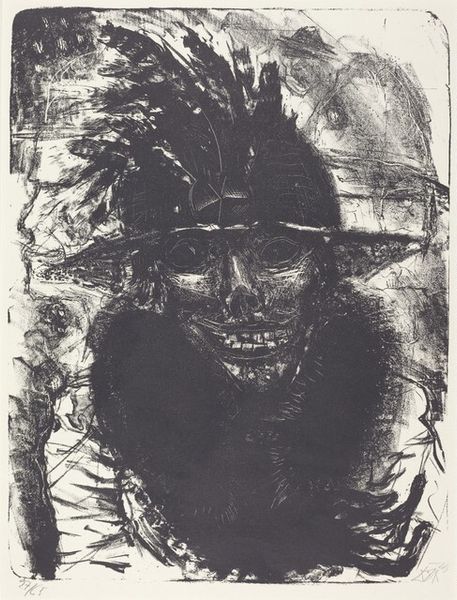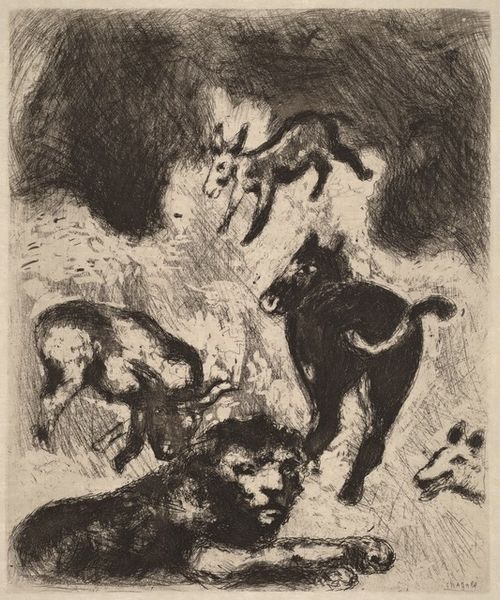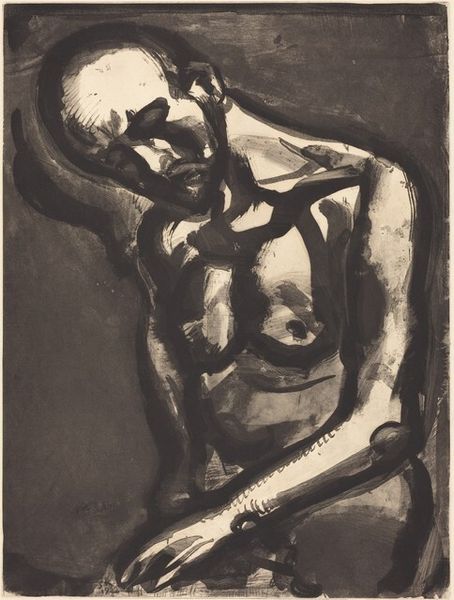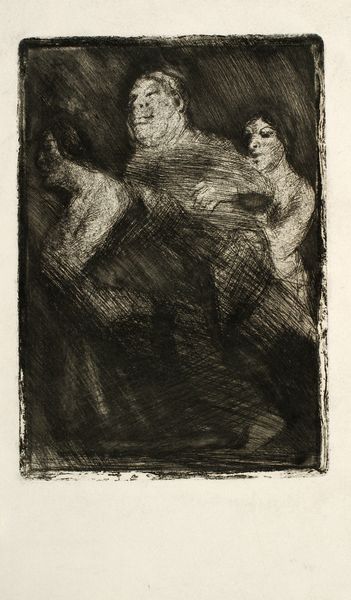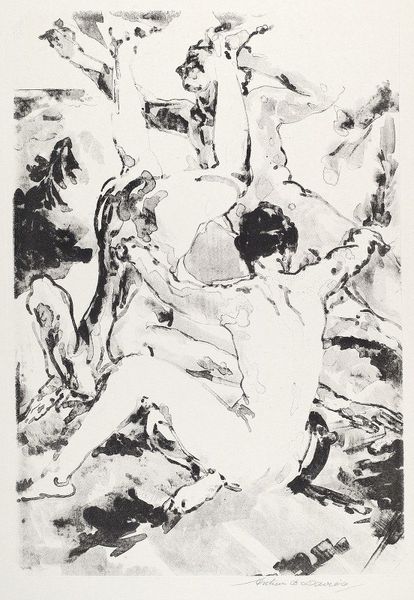
print, etching
#
portrait
# print
#
etching
#
charcoal drawing
#
figuration
#
modernism
Copyright: National Gallery of Art: CC0 1.0
Editor: This is Harold Persico Paris’s “Portrait of a Man,” made around the 1950s. It’s an etching, giving it this stark, almost ghostly feel. I find it quite unsettling actually, like a fragmented memory. What's your interpretation of it? Curator: From a materialist perspective, the medium itself is paramount. The etching process, with its corrosive acids and laborious printing, inherently speaks to themes of creation and destruction, and transformation. Notice how Paris doesn’t hide the marks of the process. These aren’t imperfections; they are the *point*. What kind of labour and access do you think went into printmaking in the 1950s? Editor: That's interesting, I hadn't thought about the physical act of creating the etching so much. I guess access to printing presses and the chemicals involved wouldn't have been widespread, so that would automatically restrict who could produce art like this. Curator: Precisely. Consider the economic conditions that allowed Paris to access these materials and this technology, even the availability of this technology hints at consumerism within the arts. How does that influence how we read the final product? Editor: So, the very fact that it's an etching, created using specific tools and processes accessible to some but not all, gives the artwork a social dimension I hadn’t considered. Is that right? So the piece says as much about consumerism and the production and consumption of art as about a person? Curator: Absolutely. By focusing on the means of production, we understand this ‘Portrait of a Man’ is as much about social forces and the commodification of art as it is about capturing an individual likeness or mood. We can infer labor through close examination of marks on the print that cannot be disguised. Editor: This has totally changed how I look at this etching; thank you. I am realizing that analyzing the process provides a wealth of context beyond just aesthetic considerations. Curator: Agreed. By exploring materiality, we unlock an entire socio-economic layer within the art itself.
Comments
No comments
Be the first to comment and join the conversation on the ultimate creative platform.
